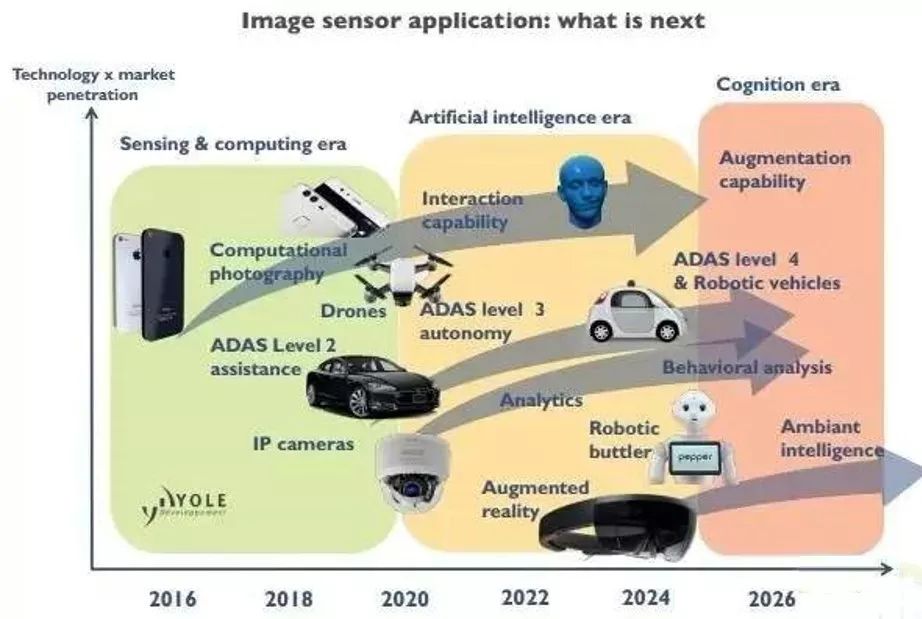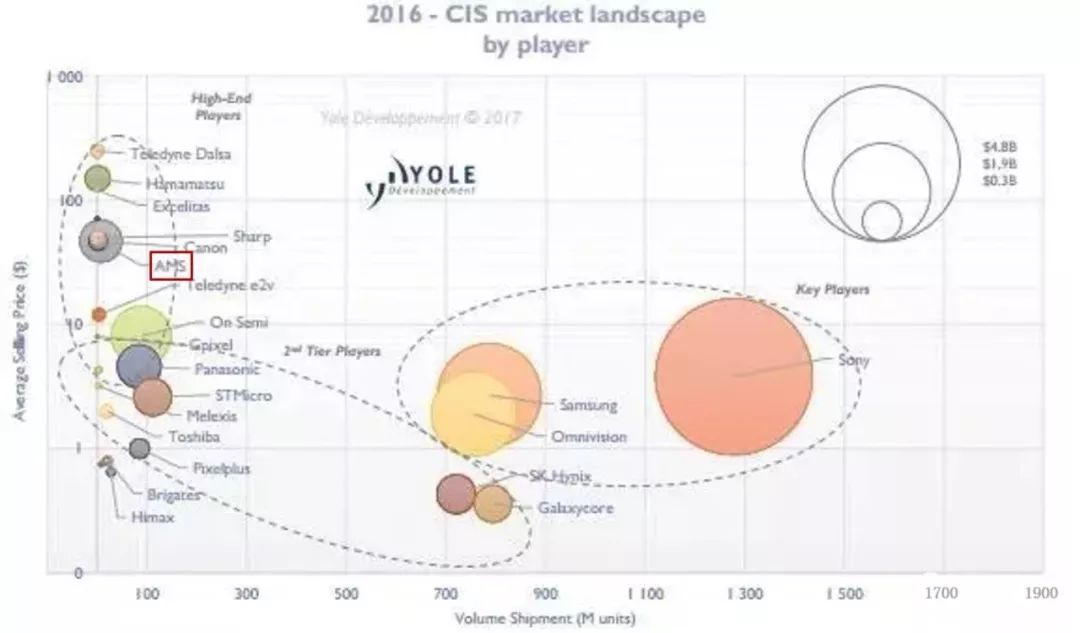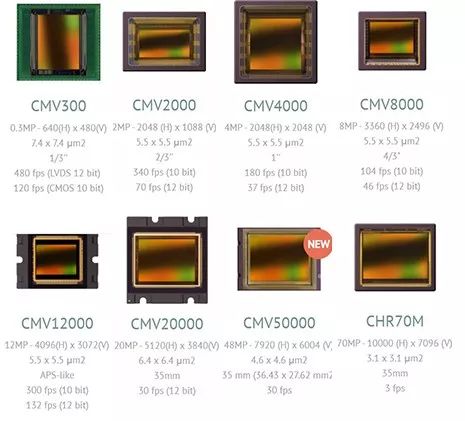CMOS image sensors began with "photographing and recording applications" and are popular in the "mobile market". In recent years, they have been driven by the high value-added downstream market. So, which ones will become the high growth area of ​​CMOS image sensors in the future? Consumer, drone, robot or VR?
CMOS image sensors have the advantages of small size and low power consumption, and the market share in image sensors reaches 90%. With the advancement of new CMOS image sensor technologies such as back-illuminated and stacked technologies, and dual-camera and 3D cameras have emerged and become new selling points for smartphones. Coupled with emerging markets such as automotive, drone, VR and AR technologies, CMOS image sensors are ushering in a new round of industry growth.

CMOS image sensor application trends
Image courtesy of Yole Développement
Consumer market still dominates
As we all know, the mobile terminal has always been an important market for CMOS image sensors. It is predicted that dual cameras and 3D cameras will be widely used in smart phones in the future. With the popularity of these two applications, CMOS will undoubtedly usher in a new round of outbreaks. At the same time, this will drive the CMOS image sensor industry to change, from imaging quality to human-computer interaction, which is a big shift from imaging to sensing and user interface.
Cars are the fastest growing segment
Automotive electronics is the fastest-growing segment of CMOS image sensors. In 2015, global sales were US$480 million, accounting for 4.8% of the CMOS market. It is estimated that sales in 2020 will reach US$1.8 billion, and the market share will reach 11%.
The continuous advancement of the ADAS system requires rear-view, front-view, and surround-view CMOS cameras to directly capture image information of the surrounding environment, enabling forward collision warning, lane departure warning, automatic parking, road condition recording, and vehicle/pedestrians. / Obstacle identification, in-vehicle environmental monitoring and other functions. At present, the high-end automotive ADAS system includes 5-8 cameras. In the future, with the development of driverless technology, the number of CMOS sensors mounted on the car is expected to exceed 10.
Medical application needs emerge
Traditional charge-coupled device (CCD) image sensor technology has been unable to meet the needs of medical image capture applications. CMOS image sensors take advantage of its six advantages to sweep medical electronic applications. The main advantages include: higher system integration, lower power requirements, more flexible image capture, more intelligent interfaces, greater dynamic range, and sensitivity. higher. Some commonly used medical devices, such as medical endoscopes, have greatly improved performance due to CMOS image sensors.
Ams' CMOS image sensor has been widely used in these areas. Ams CEO Alexander Everke has predicted that other market segments will have a broad application space in the future: "Future CMOS image sensors will be in 3D modeling, AR/VR, gestures, faces. Identification, 3D scanning and game outbreaks in six areas."

2016 CMOS image sensor industry pattern
Image courtesy of Yole Développement
With strong downstream demand and fierce competition in the industry, ams, which plays an important role in the CMOS image sensor industry, is faced with a series of high-performance product portfolios and is constantly striving for technological innovation strategies.
Surface image sensor
It includes CMV and CHR series products, which are widely used in industrial vision, scientific research, aerospace military and medical instrument related fields.

Line image sensor
It includes three series of products, Orion Line Scan, Dragster Line Scan and 4LS Line Scan, which are widely used in industrial vision and medical instrument related industries.

Miniature module
The Naneye series can be used in medical instruments and monitoring and inspection related industries.

This 10 -port USB 3.0 hub design uses 10 USB 3.0 port to extend to your computer, laptop, reader, network camera, moving HDD, Oculus, Oculus, printers and more USB devices.
This USB 3.0 fast data transmission driver The USB 3.0 center synchronization data transmission speed is as high as 5Gbps. Compatible with Windows XP / Vista / Win 7 / Win 8 / Win 10, Mac OS 10, Linux and above, compatible with USB 2.0 Connections.
10 Port Type-C HUB 3.0, USB HUB 3.0 10 Port, 10-Port USB Hub 3.0
shenzhen ns-idae technology co.,ltd , https://www.best-charger.com